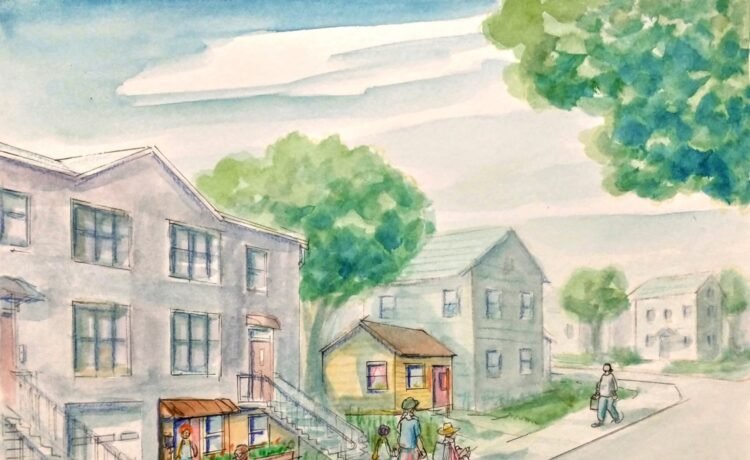
Image courtesy of the NYC Department of City Planning
New York City this week released proposed guidelines for building small homes in basements, backyards, garages, and other parts of existing properties. The Department of Buildings and the Department of Housing and Preservation on Tuesday released its proposed rules for constructing accessory dwelling units (ADUs)—a key element of Mayor Eric Adams’ “City of Yes” housing plan aimed at expanding the city’s housing supply. The proposed rules focus largely on safety standards for basement and cellar apartments, including requirements for two exits, a ban on ADUs in high-risk flood zones, and water sensors in every room to alert residents of flooding.
“Today, our administration is taking an important step toward unlocking thousands of safe, legal homes for New Yorkers. Ancillary dwelling units are a solution to our city’s housing crisis that allow homeowners to create new homes for family members or renters while keeping our neighborhoods vibrant and livable,” Adams said.
“Through ‘City of Yes,’ we’re giving New Yorkers more housing options, more flexibility, and more opportunity, block by block and borough by borough as we make New York City the best place to live and raise a family.”
Other rules for all ADU types include limiting properties to just one ADU per zoning lot for single- or two-family homes, and requiring the property owner to live in one of the main residences on the lot.
The proposed rules require property owners to post a sign marking ADU entrances if not visible from the street, with red letters at least five inches tall on a white background reading “ADU in rear” and an arrow pointing to the entrance.
Cellar ADUs must include an automatic sprinkler system, and any yards, courts, or open spaces must be no more than six inches below the window sills of any cellar room. Additionally, one water sensor and alarm must be installed in every “habitable room,” or interior space adjacent to flood ingress points like windows, doors, and other wall openings.
While the rules focus heavily on cellar and basement apartments, they appear to be separate from the guidelines the city still needs to release for legalizing a basement apartment under a five-year pilot program, according to Crain’s.
The rules will give New Yorkers clear guidance on how to build an ADU on their property. In November 2023, Mayor Adams launched the “Plus One ADU” pilot program, offering owners of single-family homes up to $395,000 to construct these units. The program received an additional $4 million in state funding last August. This initiative is part of the administration’s broader effort to address the city’s housing shortage.
Homeowners eligible to participate in the pilot program cannot earn more than 165 percent of the area median income or $186,450 for a two-person household. Preference will be given to homeowners who earn at or below 100 percent of the area median income, or $113,000 for a two-person household, as 6sqft previously reported.
ADUs are a core component of Adams’ “City of Yes for Housing Opportunity,” which aims to create over 100,000 new homes over the next 15 years by updating restrictive rezoning rules.
The housing legislation package legalized basement apartments across most of the city but limits construction in certain historic and lower-density outer borough areas. The law legalizing these units took effect on June 16, according to Crain’s.
DOB will host a virtual public hearing on August 18 at 11 a.m., giving New Yorkers an opportunity to comment on the proposed rules. Interested participants can register here.
The department will review public comments before publishing a final adopted version of the rule later this year.
“We must say ‘yes’ to a little more housing everywhere, and that includes in our own backyards,” Adolfo Carrion, Jr., deputy mayor of housing, economic development, and workforce, said.
“Today’s announcement to advance new rules to allow for the creation of ancillary dwelling units is yet another key step this administration is taking to be the most pro-housing administration in our city’s history.”
RELATED:








Recent Comments